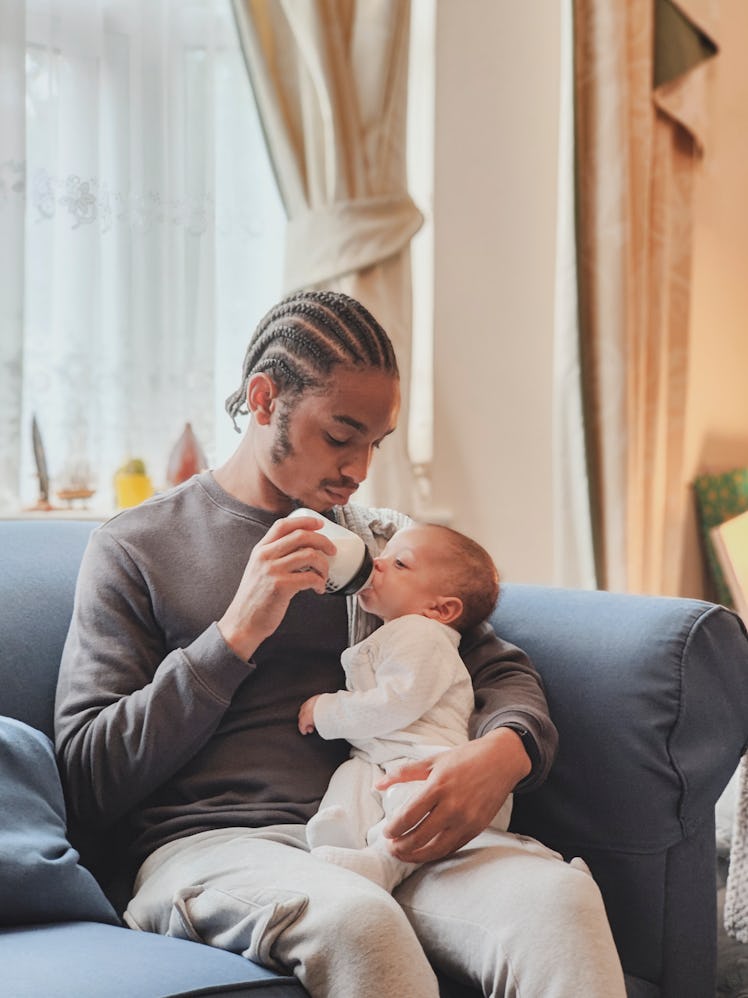How To Sterilize And Clean Baby Bottles
In many cases, good old soap and water are all you need to clean a bottle.

Bottle-feeding and having to clean baby bottles go hand in hand. But parents should be happy to know they do not need to invest in fancy gadgets like a baby bottle sterilizer or special bottle cleaner. In fact, parents looking to learn how to clean baby bottles only need to know how to wash a dish by hand or put it in the dishwasher.
Don’t Worry About a Bottle Sterilizer…Or How to Sterilize a Baby Bottle At All
Hot, soapy water is sufficient for sanitizing a bottle, and sterilizing baby bottles on a regular basis isn’t necessary. If you opt to let the dishwasher clean your baby bottles, make sure each piece —caps, nipples, sealing rings, valves — are thoroughly rinsed under running water before being loaded. Small bottle pieces should be placed in a closed-top basket or mesh laundry bag. The dishwasher should be on a hot water cycle. And though that may be enough to kill germs on its own, most baby bottles can safely withstand a dishwasher sanitation cycle as well — just verify that the bottles are dishwasher safe.
“You don’t need to sterilize the bottles over and over again. For the first month or two, yes, but then as time goes on, you don’t need to do it,” explains Elizabeth Murray, M.D., a pediatric emergency physician. “That said, if the baby develops thrush, you have to make sure that you definitely sterilize the nipples and pacifiers after every use until it goes away. Sometimes soap and water aren’t enough to get rid of all the yeast.”
Parents should wash their hands before removing the bottles from the dishwasher. Discoloration of the plastic bottles may indicate baked milk fats from insufficient rinsing, water or soap spots, or heat damage on bottles that should have been washed by hand.
How to Clean Baby Bottles by Hand
Some parents prefer to wash baby bottles by hand, at least at first. The hand-washing procedure is very similar to dishwashing — hands need to be washed and bottles disassembled and rinsed thoroughly. Hot, soapy water is sufficient to kill most microorganisms and sanitize bottles. A dedicated bottle brush is a good idea — it avoids transferring heavier food greases that can accumulate on regular dish brushes, and it can be cleaned easily and replaced cheaply if need be. No special dish soaps or baby bottle cleaners are necessary, although parents may feel more comfortable using dye or fragrance-free options to clean bottles.
The next step in handwashing baby bottles is to thoroughly rinse each part of the bottle and nipple assembly until any trace of soap is gone. Then each item should be placed on a clean towel or a special mat for air drying in an out-of-the-way place. Any brush or mat used to clean or dry bottles should be washed and dried regularly.
Bottles need to completely dry before being put away. Assembling bottles and putting them away in a cabinet wet can trap moisture and foster microbial growth. Sterilizing bottles should be done before they are dried and before they are put away. As far as sterilizing goes, low-tech options are fine. A steam bag is often as good as a fancier, more expensive bottle sterilizer.
How to Clean, Care for and Sterilize Baby Bottles
- Bottles should be cleaned immediately after use — leaving milk to curdle in the bottle makes washing harder (and much grosser).
- Disassemble the bottle and nipple completely before washing.
- Washing with good soap and hot water is sufficient to kill more germs.
- Use a dedicated bottle brush and drying mat — and don’t forget to regularly wash and dry them.
- Rinse thoroughly, leaving no trace of soap behind.
- Let them air dry thoroughly before storing them.
- Sterilization can be an occasional procedure but doesn’t need to be done with every washing.
This article was originally published on